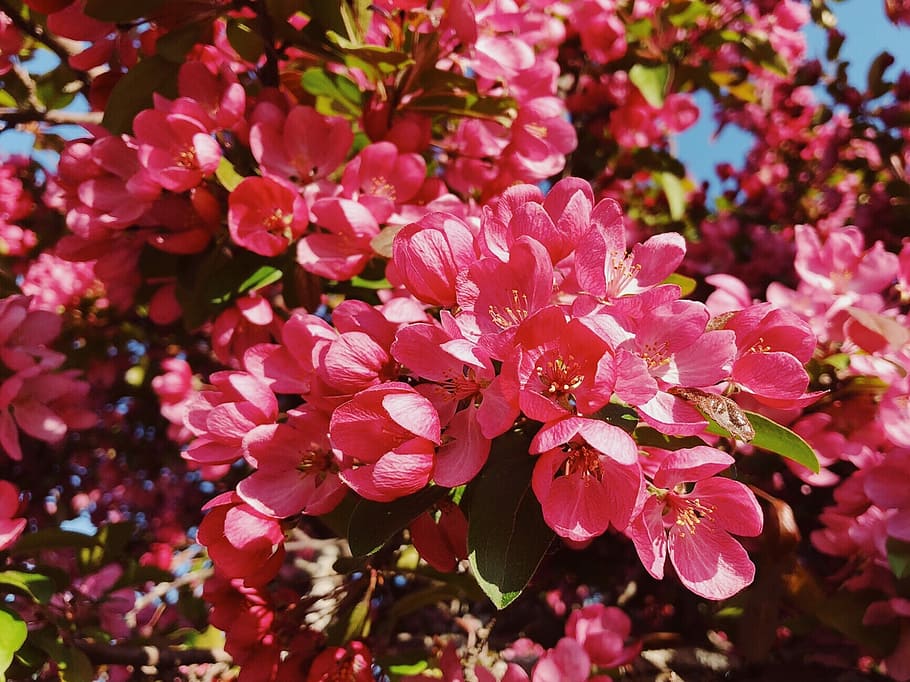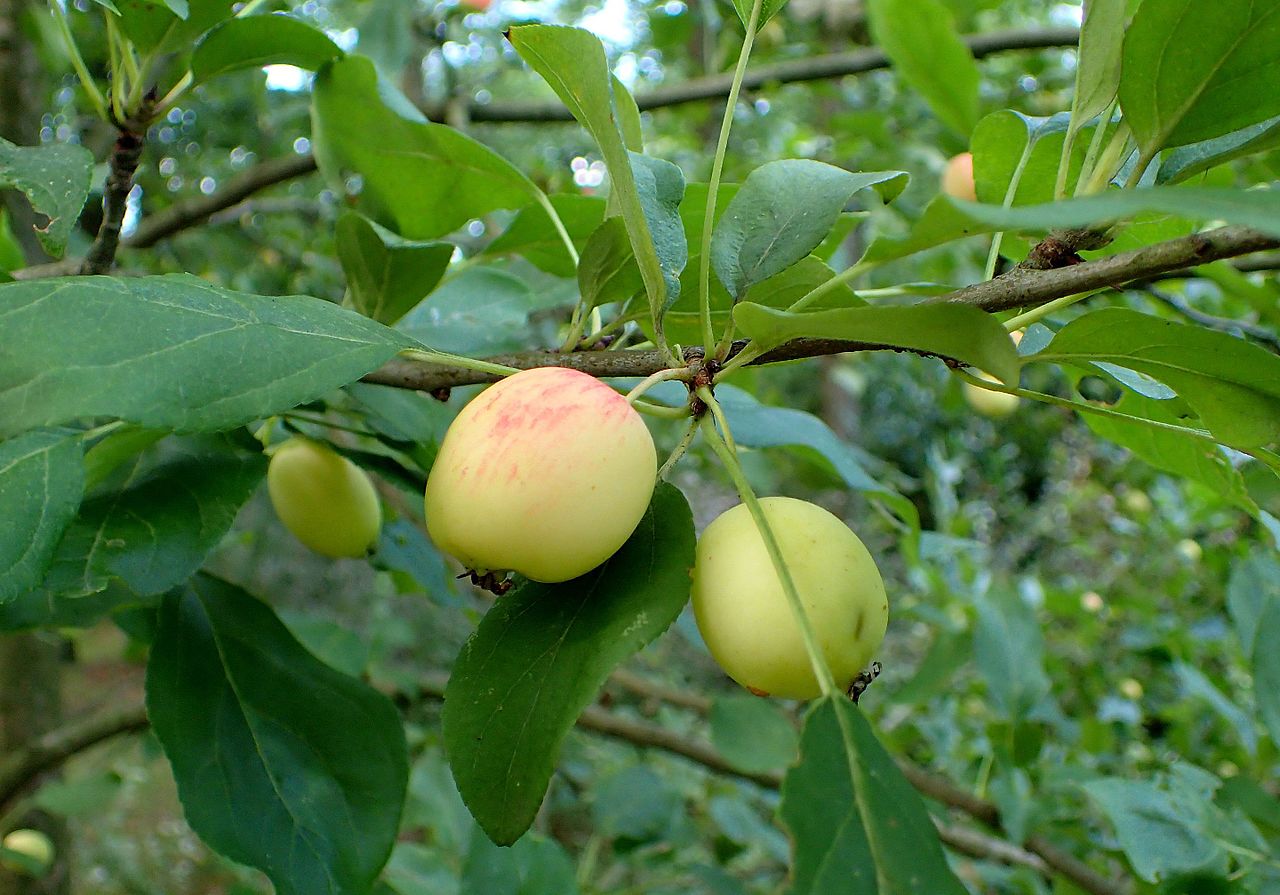
In Asia they can boast of having a great variety of tree species with great ornamental value. Some of them also have amazing adaptability, something that is certainly appreciated when you want to have a garden that is different from the others.
One of these species is that of a tree that becomes a natural spectacle every spring, and as if that were not enough, it resists frost very well: malus floribunda. Perhaps this name doesn't ring a bell, but don't worry, its common or popular name is apple tree.
What is the origin and characteristics of the malus floribunda?

It is a deciduous tree native to Japan that reaches a height of 10 meters. Its trunk is straight, with the bark that tends to crack as it ages. The branches are pubescent, and from them sprout simple and oval leaves with a size of 4 to 8 centimeters long by 2 to 4 centimeters wide, and have a toothed margin. The upper part is dark green, but the lower part is paler.
Blooms in spring, producing numerous flowers grouped in clusters of 4-7 units of red-pink or white. The fruit is spherical, about 2-3 centimeters, and yellowish.
It is popularly known as flower apple tree, Japanese wild apple tree or Japanese apple tree.
What uses is it given?
It is a tree that is used only as an ornamental plant. In the gardens looks very nice as an isolated specimen, but can also be had in lineups or groups.
There are those who venture to work it as a bonsai, since it tolerates pruning quite well, which is why it is also interesting as a potted tree.
What are the care that must be given to the flower apple tree?
El malus floribunda It is a rustic tree, which must be placed outside. It is important that you give it direct sunlight, at least 4-5 hours each day. Its roots are not invasive, but in order for it to grow properly it is necessary that, if you have it in the garden or orchard, it is planted at a distance of at least 4 meters away from walls and walls, as well as from other tall plants. .
If we talk about the land, it has to be rich in organic matter, but it also has to be able to drain water quickly. On the other hand, if you are going to grow it in a pot, the substrate can be universal, or mulch mixed with 20-30% perlite.

Image sourced from Wikimedia/Krzysztof Ziarnek, Kenraiz
Irrigation will be moderate, since it does not resist drought. How often will depend on the weather and location, but generally you'll need to water it about 3 times a week during the summer, and every 5-6 days the rest of the year. In any case, if you have doubts, check the humidity of the soil or the substrate, and always keep in mind that it is better for the plant to go thirsty for a few days before it drowns, because it is much easier to recover a plant that is drying out than another. who is suffering from excess water. And it is that, in the first case, it will be enough to water it a lot until the soil is well soaked, but in the other... the fungi have probably already caused irreversible damage to the roots.
During the spring and summer it is advisable to fertilize the flowering apple tree with organic fertilizers, be it mulch, compost, manure from herbivorous animals, guano,...
Finally, tell you that resists up to -18ºC.